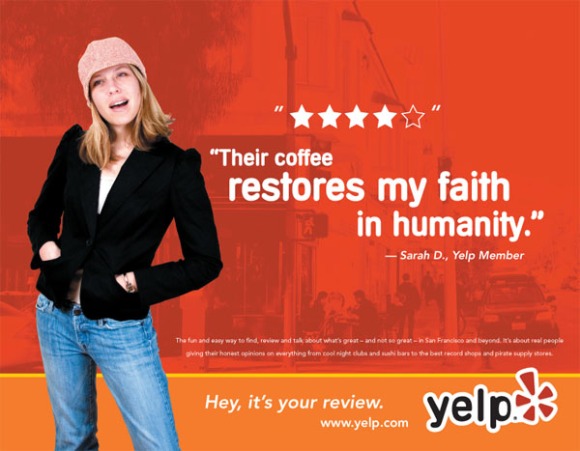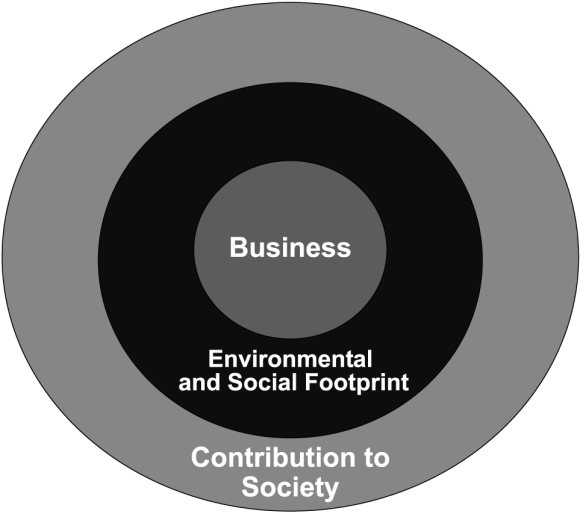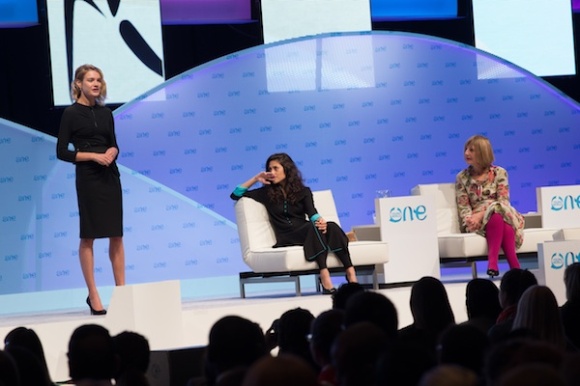“Who cares wins.” For David Jones, this is not a question. It’s a new business imperative. As the CEO of Havas, one of the world’s largest integrated marketing and communications companies, Jones literally wrote the book on how social media has upended the relationship between business and customer, giving customers more access to information and the ability to demand that corporations act responsibly.

David Jones’ book explains how social media has become linked to a company’s bottom line. (Credit: whocareswinsdavidjones.com)
This month, the Collaborative Services blog is examining social media and its effect on communication. In the world of business, Jones explained that a company’s perceived social responsibility isn’t limited to philanthropic giving. Businesses need to have a broader sense of purpose now beyond just profit, and that is a direct result of millions of customers having access to worldwide networks. Through sites like Yelp and Trip Advisor, a nasty review of a product can get around the world faster than any commercial nowadays. On top of that, the Internet gives people access to more than just a company’s product. Perhaps your CEO is caught on a cell phone camera badgering a flight attendant. Or a picture of poor working conditions makes it onto an employee’s Instagram. This damage could be reflected on the balance sheet.
Jones said that companies need to be aware of how their image is portrayed on social media. He practices what he preaches at Havas, integrating digital media at the company’s core model. The England native has also worked as an advisor to British Prime Minister David Cameron and assisted former Secretary-General of the United Nations Kofi Annan with his climate change awareness efforts. He is working to engage young people through social media with his One Young World organization, which aims to bring together young people from around the globe who are already making a difference in their in communities and give them a seat on the world stage.
We asked Jones about how social media has affected business so far, and where he thinks it’s headed.
1. In your book Who Cares Wins, you argue that businesses must become more altruistic and positively involved in the world if they want to survive, and that social media is a key component of that. Can you explain why you think giving back makes business sense, and why you think it’s intrinsically linked to social media?
It’s not really about giving back in the philanthropic sense; it is about businesses needing to have a broader purpose than simply making a financial profit. People today are demanding it, they believe business should stand for more than just profit and they want to know about the values and conduct of businesses. What’s more, they now have the means to find out anything about [businesses]. The digital revolution has given them instant access to unimaginable amounts of information. Social media has empowered people to hold businesses and leaders accountable and to sanction and even remove those who behave in the wrong way.
We have now entered headlong into the Age of Damage, during which businesses that are not socially responsible will suffer damage as a result. The most successful businesses and leaders will increasingly be those that demonstrate the ability to add value in a socially responsible way. It’s not the old definition of ‘business as usual’ then giving something away at the end of the year, nor is it about some nice siloed CSR (corporate social responsibility) activity – it’s about putting socially responsible business practices at the core of business strategy. It has taken CSR out of the silo and onto the P&L (profit and loss) statement.
So it’s not about charity but actually about competitive advantage. The new price of doing well is doing good.
2. Social media is still relatively new. Can you remember a specific moment, or platform, that convinced you social media was here to stay, and would play an important role in the business world?
One of the key moments for me was when we did the TckTckTck climate campaign for Kofi Annan. We created an open-source campaign that managed to attract 18 million climate allies–and that was back in 2008 before social media had really taken off. So it really underlined its power and potential. Also One Young World, the charity I co-founded with Kate Robertson our UK Chairman is run 100% on social–that’s how we recruit the 1,200 people from 183 countries who attend every year, that’s how they stay in touch with each other and drive their projects forward, and that’s how we stay in touch with them.

Greenpeace members climbed a glacier to bring awareness to the UN”s TckTckTck climate change campaign (Credit: Greenpeace Switzerland)
And, even though social media might seem like a recent development, the scale is incredible. For example, recent figures from Intel show that in the space of one minute: 30 hours of video are uploaded to YouTube, there are more than 2 million Google search enquiries, 6 million Facebook views and, on Twitter, 100,000 new tweets.
3. How does your company, Havas Worldwide, utilize social media?
We’re very active across many platforms—Twitter, Facebook, Instagram, etc., and we try to jump on new things like Vine as soon as they come out. The structure of Havas Worldwide is unique among big agency networks: instead of silo-ing digital off on its own, we’ve integrated it into a “digital-at-the-core” model so it’s at the heart of all our agencies.
Digital/social has already been a huge disruptor in many industries—we keep seeing the Kodak vs Instagram story played out again and again—and advertising is no exception. One really revolutionary and disruptive model is Victors & Spoils, the first agency to find the best creative ideas by crowdsourcing the client’s brief, and they’re now part of our network.
4. Your One Young World organization has received a lot of positive attention. Can you talk about what the organization does, and how it uses social media to achieve its goals?
One Young World is an open source platform that brings young people together with world leaders to debate the biggest issues facing the world. They formulate solutions to effect positive change and create lasting connections with each other. We stage an annual Summit – in 2012 we had 1,200 young leaders from 182 countries gathered together in Pittsburgh USA and in October 2013, the Summit will take place in Johannesburg, South Africa where we expect even more delegates with even more countries represented. The Olympics Games is the only non-governmental event that gathers together more countries than a One Young World Summit.
At the Summit some really outstanding Counsellors, including Kofi Annan, President Bill Clinton, Professor Muhammad Yunus, Sir Bob Geldof, Jack Dorsey, and Jamie Oliver, join the delegates, debate the big issues, give guidance and listen the younger generation’s point of view and ideas. The Summit is just one event in each year though, after it’s over then the Ambassadors get really active, driving positive change in the communities, companies and countries. Almost 4 million people around the world have been impacted by the work of One Young World Ambassadors.
One Young World HQ in London uses social media to stay in touch with the Ambassadors and share the work they are doing across the wider network but it’s really the Ambassadors who are the experts. This generation knows more about the digital and social tools than anyone else and many of the One Young World Ambassadors have massive social media followings that they are brilliant at mobilising to build movements and help drive positive change.
5. When you became CEO of Havas Worldwide, you were reportedly the youngest CEO in the history of the ad industry. What advantages and challenges came along with that? How did that affect the strategies you use to ‘sell’ social media?
The advantage is probably trying to change the status quo, the challenge is the same. When I was CEO of our agency in Australia in 1998, we launched a digital agency inside the ad agency. The reaction of most people was, “Why are you doing that? You’re not an IT or software business.” Clearly today, no one would ever admit to saying that. It was a similar thing three or four years ago with social media, which a lot of people dismissed as a fad. And I’d argue that it’s the same today with social responsibility in business, although that is changing fast. To be clear, I’m not claiming to have some special magic crystal ball that sees the future. (I very clearly told the person who taught me Twitter four years ago that I was only doing it because I had to and that I thought it wouldn’t ever catch on.)
But I think if you remain open to new ideas, it will help your clients and your own business do better. And it will help you avoid making mistakes. We’ve all seen the famous video of Microsoft CEO Steve Ballmer laughing at the iPhone being launched.
6. Can you cite any examples of companies that have followed your advice? How were they successful?
We’ve seen a number of companies that have become outstanding examples of “doing well by doing good.” The most successful have constructed their entire business model around core values like sustainability or social responsibility. What Unilever CEO Paul Polman is doing right now is absolutely brilliant—he took a huge risk and very boldly said he was going to halve the environmental footprint of the company while increasing sales, and he’s proven he actually can do that and also grow as a business.
Other great examples are Patagonia, who are so serious about their commitment to sustainability that they actually ran an ad on Black Friday urging customers not to buy their clothing, and instead encouraging second-hand use; and Chipotle, whose “Back to the Start” commercial was one of my favorites last year.

Outdoor clothing and gear retailer Patagonia encouraged customers to give rather than receive on Black Friday last year. (Credit: Patagonia)
7. Have you ever seen a company experience any unintended consequences from the use of social media?
Yes. Time after time. The new rules of social media are the same as the new rules of running a business today – transparency, authenticity and speed. When faced with a problem, the old rule was often ‘don’t respond to it’ as you will turn it into a bigger issue but that is now one of the biggest mistakes you can make. The new rule is ‘presume this is going to be a global issue within five minutes’, but not everyone’s been so quick to grasp that.
There’s a new story every week of companies getting into trouble because they either underestimated the power and speed of social media or were just taken by surprise. For example, HMV was completely taken by surprise when an employee who was about to get sacked along with many of her colleagues during downsizing hijacked its Twitter account. By the time the company had caught onto what was happening, its dirty laundry had already been extensively aired in public.
A great case study for how to bounce back from disaster is Domino’s Pizza. A video had surfaced, and quickly gone viral on YouTube, showing employees doing disgusting things to customers’ pizza. Domino’s felt immediate fall-out, but managed to turn the situation around and launched a successful campaign based on transparency, asking customers what they really thought of the product and then improving it.
8. You write in your book that a key component to successful business today is transparency. Why is this more important now than ever? Is a negative Yelp! review or Tweet really that devastating, or is it something else?
One bad review or tweet is not necessarily that devastating, but we’ve seen plenty of examples of late of companies or figures that have had their entire reputations destroyed because of what the transparency of social media can reveal. Look at fashion designer John Galliano, who was immediately fired from his post at Dior after a YouTube video revealed him having an anti-Semitic rant. But Dior’s reaction actually enhanced their credibility and the respect people had for them.
We are living in an open world where transparency, authenticity and speed are the most important rules; where people can and will find out everything about your brand and share it with each other; where they want to know what a company stands for; and where brands are defined by what people say to each other about them, not what brands say about themselves.
Far from being bad news, this represents a huge opportunity. In the past century we built brands through marketing, in this one, we will build them through behavior. Smart companies will out-behave the competition – and act before someone acts on their behalf.
9. You’re an ad man, and a cynic might say that some companies want to make “doing good” part of their brand, without actually doing much. How can companies really give back, and prove it?
If companies are not genuinely making an effort then they will soon be found out and will suffer the consequences. Today it is not possible to have a gap between a company’s image and its reality. Someone will soon expose it and share it with the world. It’s about genuinely making an effort and heading in the right direction; people are not looking for perfection – they are looking for honesty.
In terms of our own industry, we are brilliant at using creativity to change people’s purchasing behavior. But you can also use creativity to encourage behaviour change for good. I believe this is not only an opportunity but also an obligation for those of us in the creative industry and that we can use our talents to address some of the bigger issues facing the world.
Business is such a phenomenally efficient organism – if the biggest businesses in the world set out to be really socially responsible, they’d have an enormous impact on the world.
At a simplistic level, in the last century NGOs (non-governmental organizations) and charities had great intentions, but not always great execution. Businesses had great execution, but not always great intentions. This century needs to be about, and can be about, great intentions and great execution.
Business can be a major force, in fact, the major force to drive positive change in the world. It is in a unique position.
************
Thank you David, for taking the time to share your insights. We’ve long heard that the customer is always right, but through the power of social media, customers can now demand that corporations act “right” as well. After all, if someone is going to like your brand on Facebook, you can’t turn around and embarrass them on YouTube. Increased transparency continues to change the relationship between business and communication.
Elizabeth Malloy, Associate
Collaborative Services, Inc.









Recent Comments